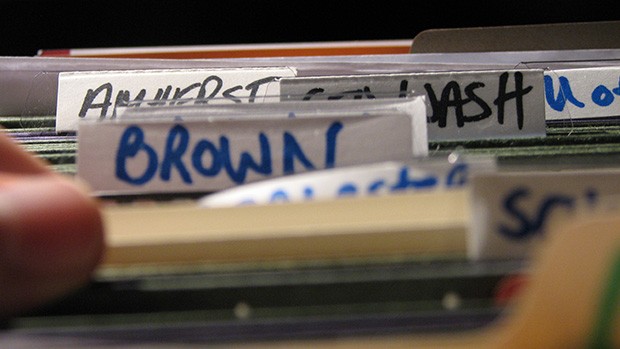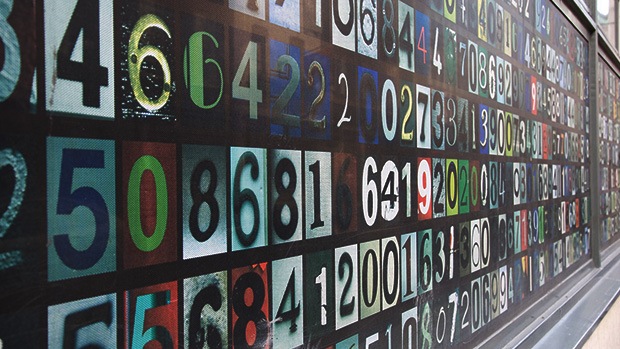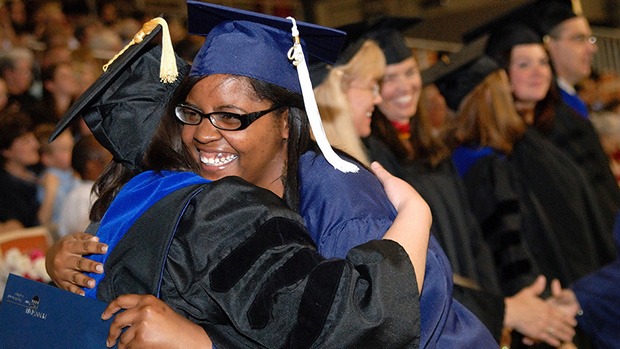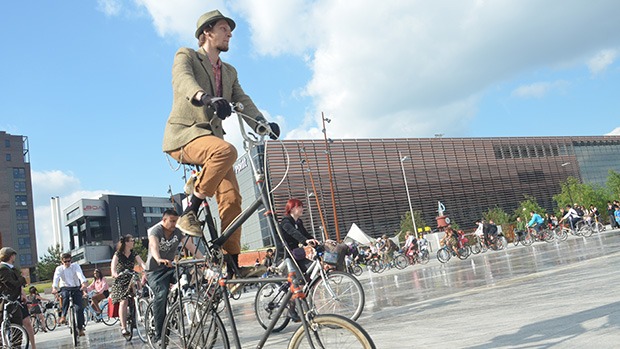Total recall? The making of memories
Expert reviewers
Essentials
- Memory is the process of encoding, storing and retrieving experiences and knowledge in the brain.
- Researchers still do not understand the full complexity and capacity of human memory.
- Memories are not stored in a single part of the brain; many regions are used.
- We have multiple types of memories supported by different memory systems that are closely interlinked.
- Memories are not static—they can become stronger, weaker or distorted over time.
What’s his name again? Where was I going? I can’t get that song out of my head. Yes, I remember what I was doing when man first walked on the moon … Our memories are a fascinating and remarkable thing, on the one hand enabling us to recall a vast amount of stored information, facts and statistics and, on the other, sometimes letting us down completely as we walk from one room to another and then forget why we’re there. But what is memory, how does it work and how can it be improved?
Why is memory important?
Take a moment to think about some of the things you did today—you got dressed, made breakfast, brushed your teeth, possibly drove to work, greeted colleagues, logged on to your computer and picked up where you left off yesterday. Often our actions are so automatic that we don’t stop to appreciate just how frequently we rely on our memory to get us through the day. Yet from remembering how to put our pants on, where the milk is stored, how to drive in traffic or what our boss’s name is (let alone our password login), we need our memory to learn from, make sense of and interact with the world around us.
But even more than this, our memory is also what makes us ‘us’. The smell of your mother’s perfume, the taste of grandma’s pie, the first time you said ‘I love you’ or the music you walked down the aisle to—being able to recollect the people, places, events and experiences that have occurred in our lifetime shape who we are, tie our past and present together and give us our sense of self.

What is a memory?
When we talk about memory, what exactly do we mean? Do we mean the individual, unique events remembered from our past, or are we talking about the faculty by which our brain stores and retrieves information? In a way, it’s both. Memory is not a ‘thing’ that can be touched, it’s a concept that refers to the process of remembering.
Essentially it can be defined as the process of encoding, storing and retrieving experiences and knowledge in the brain.
Cartoons might like to portray our memory as a filing cabinet, where all our memories are securely locked away one by one. Pull out the file marked ‘first day at school’, and you’ll remember the ups and downs of that momentous day. Reach for the folder ‘funny friends’ and you’ll be presented with a list of your most humorous pals. But, in reality, memories are not stored in this way. In fact, we don’t have ‘single’ memories at all. Instead, these recollections are actually complex constructions of multiple memories, all stored in, and coming together from, different parts of the brain.

When you think of a car, for example, your brain works to retrieve—from its many different regions—all the memories about what a car is: the sound it makes, its name, how it looks, smells and functions. It compiles this information into a cohesive ‘single’ memory, so that you can recognise ‘that’s a car’.
So, rather than a filing cabinet, a more apt representation of our memory would be a complex web, where the multiple strands represent the different elements of a memory (visual, spatial, emotional, auditory and so on) which eventually come together at the connection points to form a ‘complete’ memory for us to enjoy.
How do we make memories?
We mentioned above that memory is the ability to encode, store and retrieve information. Let’s take a closer look at these concepts.
- Encoding
- The first step to creating any new memory is encoding. Put simply, encoding is the process of understanding and converting information that the brain receives into a form that is relevant, meaningful and useful to you, so that it can be deposited in the brain for later retrieval. For information to be encoded, you need to be paying attention—otherwise the data is lost. So if you forget someone’s name the moment you’ve been introduced, it’s not because you have a poor memory; it’s likely to be because you weren’t concentrating on the information and making connections to it, like, ‘Oh, that’s my sister’s name’ or ‘Sarah has red hair’.
- Consolidation
- This is the process where a memory is stabilised after its initial acquisition, and can take some time. Sleep (especially slow-wave sleep), during which memories are reactivated and rehearsed, appears to be crucial for the consolidation of memories.
- Storage
- This is the stage of the memory process that bridges encoding and retrieval, and relates to the persistence of memory over time. Memories are stored by changing the strength of connections between neurons. Emotionally relevant or weighted information is more likely to be retained due to the power of brain regions that process emotion. As noted above, memories are not stored in a single place, but bits and pieces of them come together from across different regions of the brain.
- Retrieval
- The final stage of the memory process is retrieval—that is, accessing the memories you have stored away. This can often be where the process fails; the memory (such as an acquaintance’s name) may still exist but, in that moment when it needs to be retrieved you’re drawing a blank, only to find the name pops back into your head later in the day.
Memory storage and retrieval differs between short-term memory (STM) and long-term memory (LTM). For example, researchers believe that STM is stored and accessed sequentially (that is, you can recall the fifth number of your phone number only by first running through the numbers preceding it). Long-term memory, on the other hand, is stored and retrieved by association, based on the emotional or physical triggers present when the memory was made. There's more on this below.
Different methods can be used to enhance the encoding, storage and retrieval of memories, including mnemonics, visual cues, chunking (such as remembering a mobile phone number in groups of numbers), or adding a personal element to information.

Researchers have also found that the more you rehearse a memory, the more resilient it becomes. This is because the connections between neurons become stronger the more they are activated. So if you frequently recall your last birthday party, that memory will become richer and stronger, and less likely to be ‘lost’.
But, as with all things to do with the brain, it’s not that simple. The memory process involves a bit of a tricky loop here too. For example, while we talk about the three stages of ‘encoding, storage and retrieval’, in reality they are not completely separate, instead having a constant interplay with each other. The way we encode information determines how it is subsequently stored and what retrieval techniques will be effective when we try to recall it. And the act of retrieval itself changes the memory, and how it is then sent back to storage and then re-remembered.
If the whole brain is involved in making, storing and retrieving memories, which bits do what? How does it all work? Well, that question is still puzzling researchers, but we do have some idea about which regions of the brain are implicated in which kinds of memories:
- Frontal lobes
- working memory and prospective memory
- Amygdala
- emotional learning and memory
- Temporal lobes
- autobiographical memory, semantic memory (memory for facts)
- Parietal lobes
- autobiographical memory
- Basal ganglia
- implicit (procedural) memory
- Mammillary body
- recognition memory
- Hippocampus
- spatial, navigation, declarative learning GLOSSARY declarative learningacquiring information that can be consciously recalled and stated in words, such as facts and memory, future thinking and imagination
- Cerebellum
- implicit (procedural) memory
While each of these areas is involved in the memory functions we’ve listed, other regions of the brain also play their part. Again, we can think of it like a web, with connections between networks determining particular types of memories. So, for example, a network involving the amygdala and hippocampus, in which these structures ‘talk to’ each other during consolidation, works to form long-term memories of significant emotional events.
Stages of memory
There are two main stages of memory: short-term memory and long-term memory.
Short-term memory
Short-term memory—also known as primary or active memory—acts as a sort of ‘holding cell’ for information which is still being processed. Essentially it’s the information we are currently thinking about. Often-given examples of this type of memory are the ability to remember the start of a sentence while the remaining part of the sentence is still being read, or remembering to carry the 1 into the next column when doing mathematical equations.
Short-term memory can only hold small amounts of information (typically about seven items) in an active, available state for a few seconds to a minute. Short-term memories can progress to being long-term memories if we make a conscious effort to remember and retain the information, such as through the process of continuous repetition.
Long-term memory
Long-term memory is just that—the place for memories to be stored for long periods, ranging from days to years, sometimes even indefinitely. It seems that our long-term memory can potentially store an almost unlimited amount of information, with some researchers questioning if we ever forget anything (it’s the recall that’s the problem!). But don’t be fooled—once an experience makes its way into long-term memory it isn’t immutable. You may alter the memory each time you recall it. When a memory is recalled, it undergoes a period of reconsolidation, during which details given by others, similar memories, or the present experience can be added. Our memories therefore are not infallible or always reliable.
There are two major subdivisions of long-term memory—explicit memory and implicit memory.

Explicit memories are those that we consciously remember, such as an important life event (a wedding, the birth of a child), who came to dinner last night, or the date of your mother’s birthday, as well as information about the world. Explicit memory can be further broken down into other types of memory, including:
- Episodic
- memories of life events that happened to you or around you, often replayed as short episodes or snapshots
- Semantic
- memories of general knowledge (such as the countries in Africa or what a dog looks like)
- Autobiographical
- a combination of episodic and semantic memories
- Spatial
- such as remembering the route to drive home, or where a certain shop is located
Implicit (procedural) memory, on the other hand, allows you to remember how to do tasks without having to consciously think about them, such as riding a bike or driving a car, even if it’s been years since you’ve done them.

Will I ever run out of memory?
While it’s relatively easy to fill up the hard drive on your computer (several thousand digital photos you never look at, a few downloaded seasons of your favourite TV show), it’s not something you really have to worry about when it comes to your own memory.
Our brains contain around 86 billion neurons, and each of those form about 1,000 connections with other neurons. Add these together and you suddenly have more than a trillion connections working to increase your brain’s storage capacity. It’s been estimated that the human brain’s memory storage capacity is around 2.5 petabytes (2.5 million gigabytes) so if you compare your brain to a typical hard drive, it would be enough to store three million hours of high-resolution television. If the average person lives to be 80, they will have been alive approximately 701,232 hours—so the brain could theoretically have remembered everything that had ever occurred in their lifetime, and still have room to spare.
But not every memory takes up the same amount of space. Some are more detailed and vivid than others, some are short snippets, while others may be longer, and the emotional associations surrounding a memory might make it more complex. We’re also continuously altering some memories, forgetting others, and never even converting some of the information we absorb into memories in the first place, so getting the exact sums right is tricky. If the human lifespan continues to remain around 75–90 years, we should be fine in the memory stakes.
How can I improve my memory?
We might like to think that our memories are safe and secure but, in reality, there are many things that can affect our ability to create, store and retrieve them. These include aging, trauma, disease, medications, drugs, alcohol, lack of sleep and even stress. But fear not, there are many steps we can take to improve our memories and our recall ability.
Some of these are relatively easy and have overall health benefits—get a good night’s sleep, eat a healthy diet and exercise regularly. But other methods might take a bit more effort.
While some people (for instance, those with eidetic, or photographic, memories) appear to be able to quickly form and retain memories, for most of us, the old adage ‘use it or lose it’ rings true. Some researchers recommend playing brain games and undertaking mental exercises (such as puzzles, word and number challenges), particularly as we get older. But mastering a new skill, such as learning a language or a musical instrument, is even more helpful, as is frequently retelling and remembering memories or writing them down. Another popular technique is mindfulness, where you try to be fully aware of the things around you and the experiences you are having. This increased perception can assist with the encoding process, making stronger memories that can later be more easily recalled.

We cannot underestimate the importance of our memories. They make us who we are and allow us to actively participate in the world around us. Researchers are constantly learning more about human memory—what it is and how it works. Studies into how memories are created, stored, retrieved or lost and how they can be affected by external factors, and into the steps we can take to safeguard and enhance them, are being undertaken in labs and research facilities across the world. If you’re interested in learning more about your memory, remember to check back with Nova soon to see new articles in this series as we explore more deeply how factors such as ageing and disease can affect your brain and, of course, your memory.





